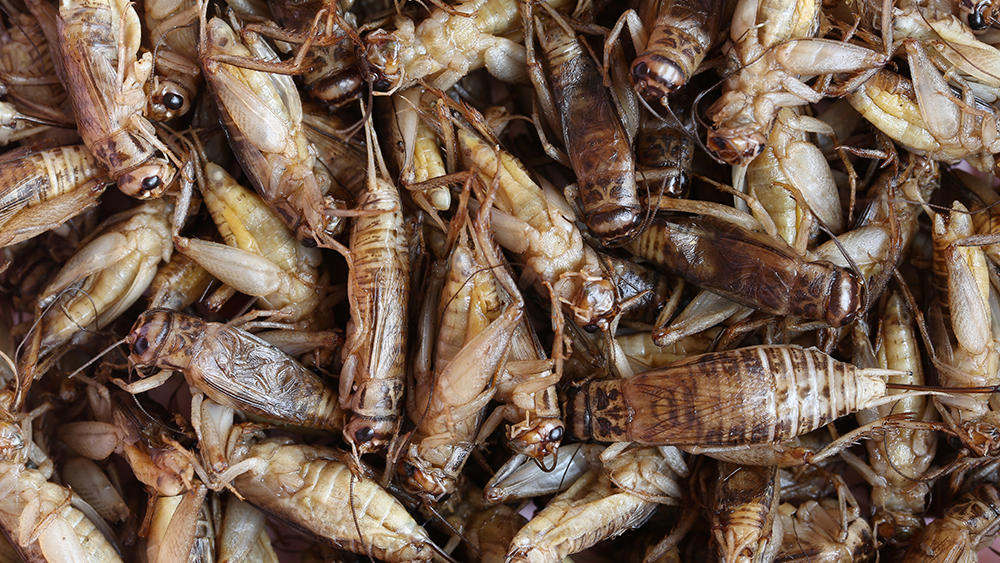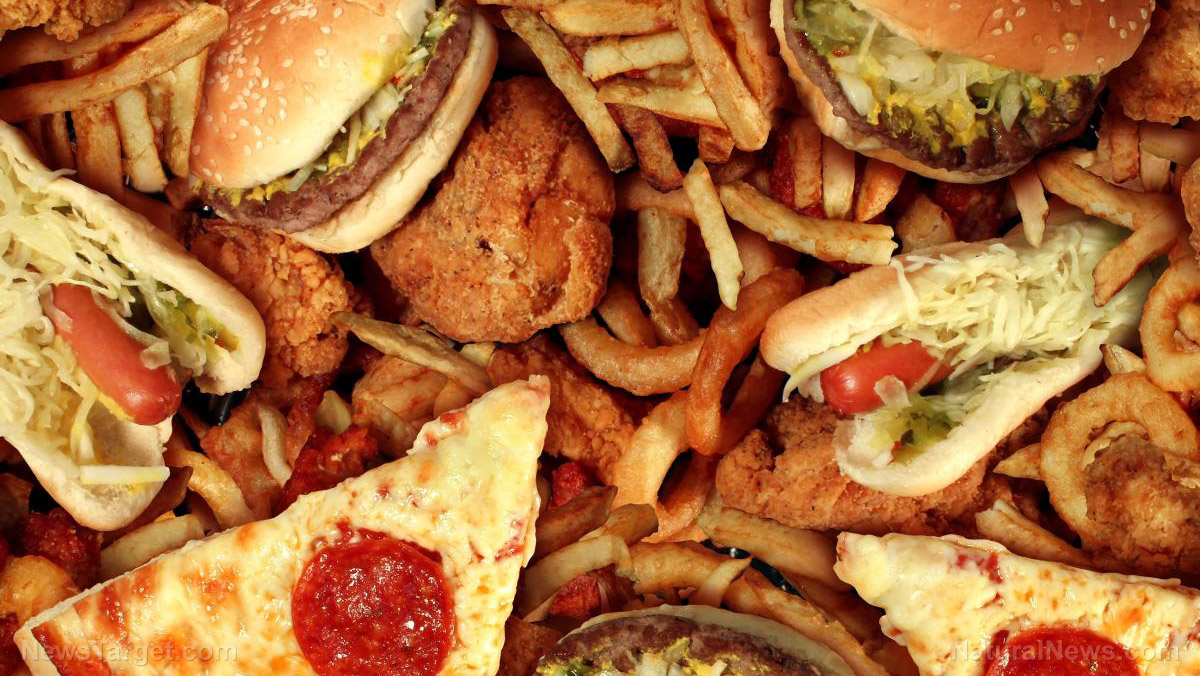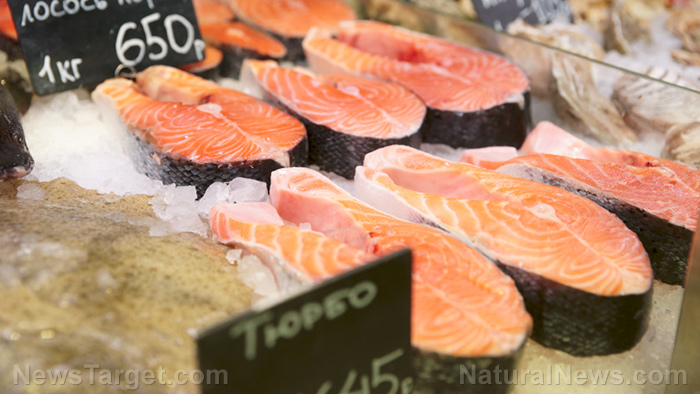Raw Egg Nationalist sounds off on JUST Egg’s artificial egg product
12/01/2023 / By News Editors

If you’ve followed my writing over the course of the last three years, you’ll know that I have a rather personal… beef with the fake-food startup Eat Just and its founder and CEO Josh Tetrick. Hopefully, you understand why. Eat Just’s products represent the opposite of everything I stand for in the realm of health, nutrition and indeed politics: corporate control of the food supply and man’s further alienation from the nutrient-dense animal foods that have nourished our ancestors since time immemorial — indeed that made modern humans (Homo sapiens) the creatures that we are. I’ve laid out the case in detail against novel plant-based proteins and lab-grown meat, and why the push to get us eating them is about far more than just nutrition or “saving the planet” from climate change, in my book The Eggs Benedict Option (which is now also available in audiobook format from Amazon, as well as paperback).
(Article republished from RawEggNationalist.Substack.com)
Eat Just is most famous — or should I say, infamous? — for its JUST Egg product, a bizarre confabulation of mung-bean protein, canola oil, colourings and texturisers that its makers claim isn’t an alternative to the real thing, but a replacement for it. That’s right; although it comes poured from a yellow plastic bottle, JUST Egg is eggs. Adverts and social-media posts actually say that.
Of course, Just Egg absolutely isn’t eggs. You know that, without me having to explain to you the differences in the constitution of a real egg and a fake one. The protein isn’t the same, the fats aren’t the same, the vitamins, minerals and micronutrients aren’t the same either. In fact, more or less everything about a real egg and a Just Egg is different. Eggs contain a whole wealth of bioactive compounds whose properties we know virtually nothing about. Those scientists are now investigating appear to have some pretty extraordinary effects, as this review paper shows.
Consider this fascinating material, from that review paper, on potential anti-cancer properties of egg compounds.
There are only few data showing that food-derived proteins and peptides can also be beneficial to prevent and to cure cancer diseases [26]. Several studies have confirmed the tumor-inhibitory activity of egg white lysozyme using experimental tumors. Its effect essentially relies on immunopotentiation [115]. Ovomucin (beta subunit) and ovomucin-derived peptides also showed anti-tumor activities via cytotoxic effects and activation of the immune system [74]. The anticancerous effect of egg tripeptides [27] and hydrolytic peptides from ovotransferrin [116] have also been published. Information in this field is quite scarce, but it may be worth continuing to investigate such activities. Some interesting data may arise from studies on egg protease inhibitors [47] since similar molecules existing in other food product, including legumes like pea, have been described as potential colorectal chemopreventive agents [117].
You don’t find any of this in a bottle of Just Egg, and you’ll probably never find it anywhere else but in the perfect natural object we call an egg.
The idea that you can just reformulate natural foodstuffs in the lab is a prime example of what I’ve called, after Rene Guenon, “the reign of quantity” in food. This is the absurd idea that you can reduce food to its macronutrient content (protein, fat, carbs) and, by simply reproducing that content, and certain physical characteristics (smell, taste, texture, appearance) you have, effectively, reproduced the thing itself.
The origin of this way of thinking about food is very recent, as I explain in the essay linked in the previous paragraph:
The idea that the proper way to think of food is in terms of its protein, fat and carbohydrate content, was first popularised just over a century ago by the Fanny Farmer 1896 Cook Book. Before then, it would have been simply unthinkable for an ordinary person to consider their food primarily in terms of its chemical components. A wild fish like a mackerel or sardine was not “an excellent source of protein and fat”, any more than oats were “an excellent source of carbohydrates”. These were simply whole foods that were eaten and appreciated for their qualities in the eating, or even just because they were readily available and affordable.
The reign of quantity is part of a broader assault on the notion of identity, and its grounding in quality, that has been taking place over a very long span of Western history. In an essay for American Mind, “Which Came Last?”, I referred to this as “nominalism” — the idea that, ultimately, all forms of identity are arbitrary and can therefore be chosen at will — and linked the emergence of ridiculous plant-based alternatives to real food with other manifestations of identity confusion in the modern world.
We are mired in a perverted form of nominalism through which all genuineness needs to be undermined. Gender and humanity itself are radically challenged. All must be reduced to nothing more than an individual’s choice of self-expression, in the acid bath of identity politics. Just as it has taken us a wayward path through history to reach the point where a man can have his penis turned inside out, take a hormone pill, put on a dress and makeup and claim to be a woman – in fact where a man can simply say he is a woman, and demand to be treated as such from that very moment onwards – so, by many strange turns, have we arrived at a place where a slurry of mung beans, vegetable oil and an assortment of texturizers, colorings and flavorings can be called, in all seriousness, an egg. Both absurdities result from the same basic stance – “This is whatever I say it is, and that’s that” – and both harm us as individuals, as well as harming our collective inheritance – our civilization. Not only has nominalism rotted our soul: it’s rotting our stomach too.
Plant-based eggs have much more to do with transvestitism than you might think. In fact, I refer to them as “transvestite food” in the American Mind article.
All of this is a rather involved introduction for the main topic of my essay today, which is that Eat Just really isn’t doing very well. Fundamentally, people just don’t want to eat plant-based and alternative proteins, certainly not in the kind of numbers that would compensate the massive investment involved in bringing these new products to market. This is why the “big beasts” of the alternative-protein market, companies like Impossible and Beyond, post record losses each quarter and keep on shedding staff. I’ve reported on this trend for the National Pulse, for example.

How they want you to see Eat Just and Josh Tetrick: the reality is very different
But Eat Just’s problems go well beyond consumer demand or lack thereof. After scandals about employee pay and working conditions, as well product safety, the company’s reputation was so damaged it had to undergo a total rebranding a few years ago. Eat Just actually began life around 2012 as Hampton Creek, purveyors of vegan mayo, until the name became so associated with scandal that the only option left was for the company to go full scorched earth on its past. CEO Josh Tetrick does not like to be reminded of this. (Go on, remind him of it.)
Tetrick also doesn’t like it when people like me poke around in the FDA filings for his lab-grown meat spin-off GOOD Meat and discover that he’s using a company linked to China’s bioweapons programme to make his “cell-cultured chicken”, and that this Chinese company is one of the world’s biggest breeders of lab animals, including primates. Not only does this look bad from a security perspective — is it a good idea to let a company linked to China’s bioweapons programme introduce a novel lab-made foodstuff into the US food supply? — but also from an ethical perspective, since the product is marketed as “cruelty-free” or “slaughter-free” meat, and yet the company that physically makes the product breeds tens of thousands of animals a year for lives of misery and torture. Oh yes, and the “cultured chicken” must also be made using fetal bovine serum, a blood product that is extracted from the hearts of live cow fetuses on the slaughterhouse floor. So even if a chicken wasn’t slaughtered to make your lab-grown chicken nuggets, a cow was. Isn’t that neat?
Read more at: RawEggNationalist.Substack.com
Submit a correction >>
Tagged Under:
bubble, China, clean food watch, Collapse, conspiracy, cultured chicken, debt collapse, deception, Eat Just, fake meat, finance riot, food collapse, Food Evolution, food science, food supply, grocery, insanity, Josh Tetrick, lab-grown meat, lies, market crash, national security, nutrients, nutrition, plant-based eggs, products, propaganda, risk, stop eating poison, toxic ingredients, traitors, treason
This article may contain statements that reflect the opinion of the author
RECENT NEWS & ARTICLES
CleanFoodWatch.com is a fact-based public education website published by Clean Food Watch Features, LLC.
All content copyright © 2018 by Clean Food Watch Features, LLC.
Contact Us with Tips or Corrections
All trademarks, registered trademarks and servicemarks mentioned on this site are the property of their respective owners.




















